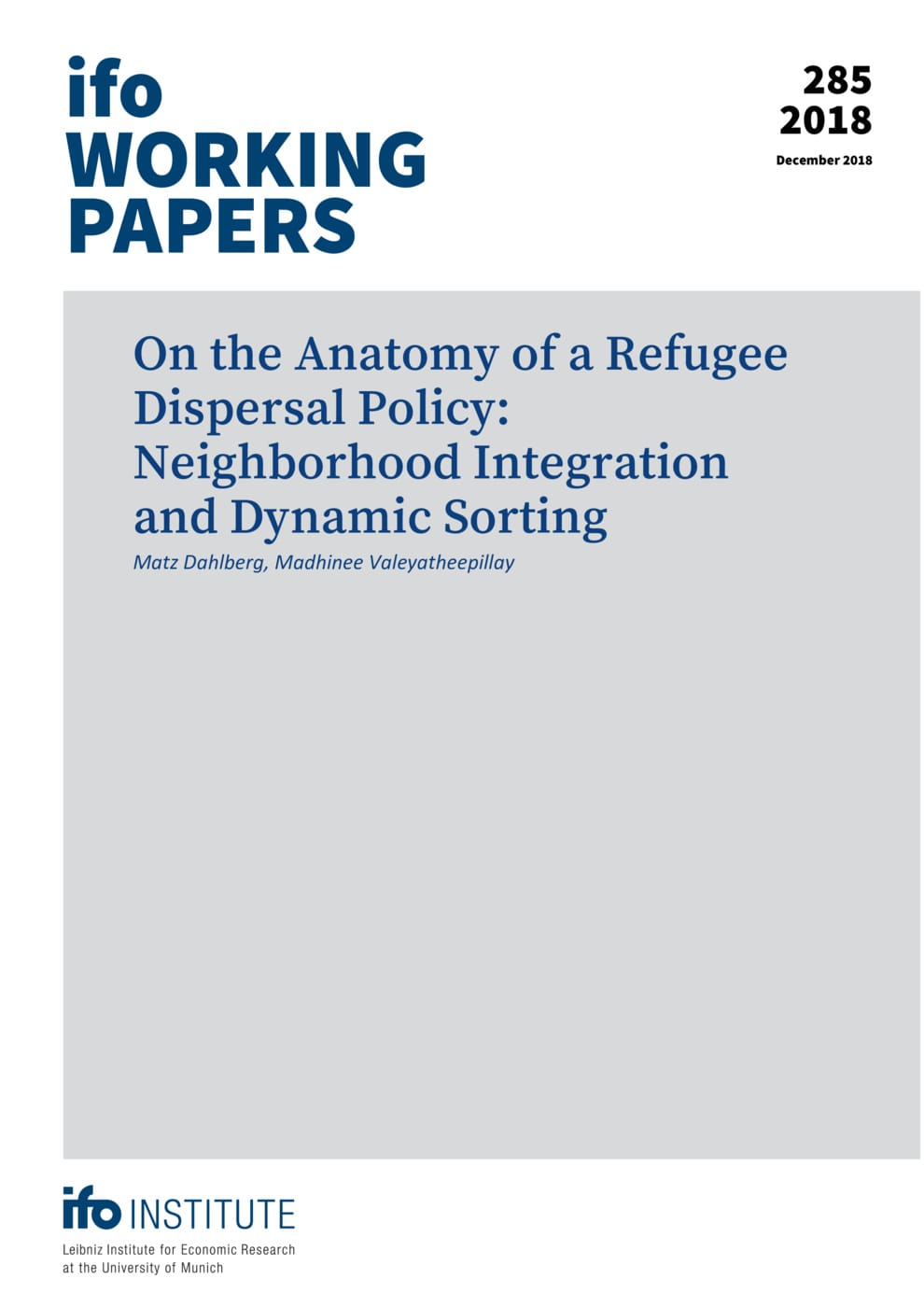On the Anatomy of a Refugee Dispersal Policy: Neighborhood Integration and Dynamic Sorting
ifo Institute, Munich, 2018
ifo Working Paper No. 285

This paper uses Swedish geocoded data to empirically investigate the effect of a geographic dispersal policy on the characteristics of the refugees’ individualized (k-nearest) neighborhoods and the placed refugees’ neighborhood trajectories over time. Our findings indicate that the initial neighborhood of placed refugees are defined by a higher share of natives, a lower share of non-Western immigrants and a higher share of high-income individuals compared to refugees that arrived in a time period when they could choose themselves where to locate. In this sense, the placed refugees are geographically more integrated. We also find that, in subsequent moves for the placed refugees, those moving longer distances experience a drop in the share of natives and an increase in the share of non-Western in their close neighborhoods. Stayers and short-distance movers, on the other hand, have a less drastic change in their neighborhood in terms of share of natives and nonwestern over time.